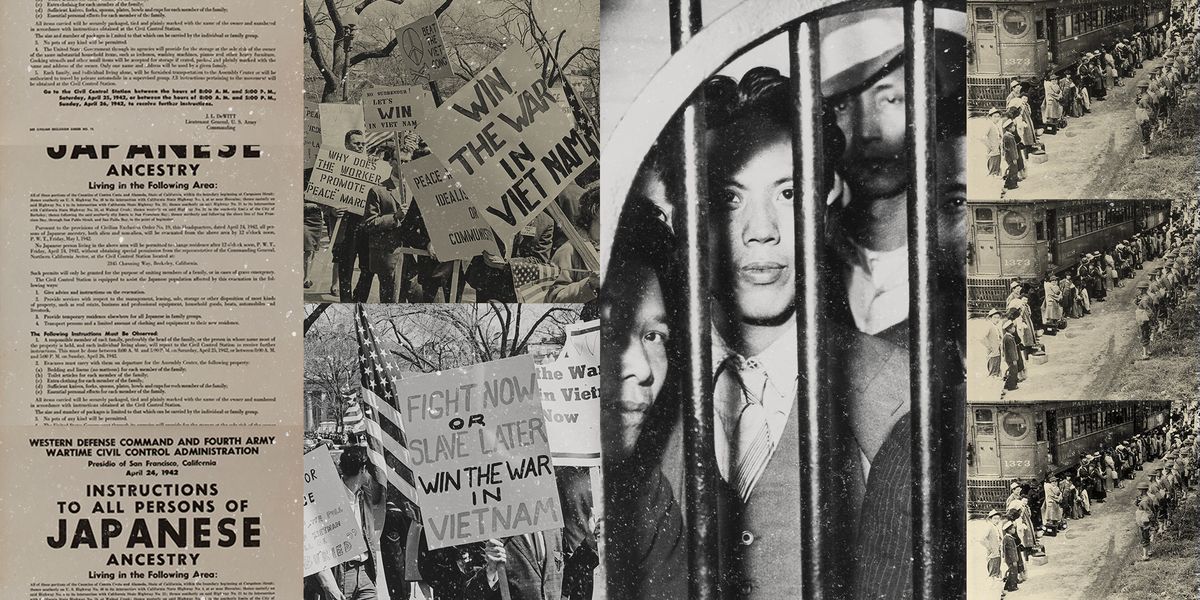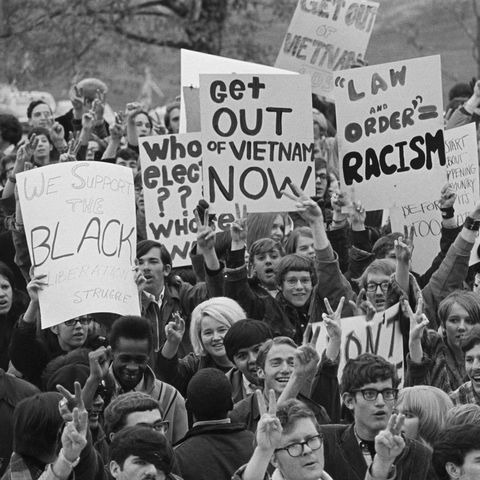Since the beginning of the COVID-19 pandemic, there’s been a significant uptick in violence against Asians and Asian Americans. The organization Stop AAPI Hate collected more than 2,800 reports of verbal abuse, harassment, and physical assaults against Asians in the United States from March to December 2020. These reports depict a disturbing reality, especially for Asian women, who experienced violence nearly 2.5 times more than their male counterparts. However, the numbers do not tell the full story: They don’t include many of the unreported and increasingly normalized incidents of violence that started as soon as the Trump administration began to unapologetically characterize the global pandemic as the “Chinese virus.” Since then, Asians and Asian Americans have shared countless accounts with one another, privately describing the challenges of everyday life in the U.S.
As an example, early last March, my aunt came home from the grocery store visibly upset. She explained that she had been chased out of a local Bay Area supermarket by another shopper because he insisted that she was carrying the virus. My uncle then suggested that perhaps dying his hair blonde could save him from the anti-Asian harassment.
These stories are painful, but they are also part of a larger, and often dismissed, history of violence. In addition to the Chinese Exclusion Act of 1882, the assaults against Filipino farmworkers in the 1930s by white mobs, and the Japanese internment camps of the 1940s, there’s a longstanding history of racialized colonial wars that shaped our communities’ histories before we even arrived to the United States.
In my undergraduate Asian American studies courses, I learned—for the first time in my life—about the Philippine-American war, where more than 20,000 Filipino soldiers died in combat, and 200,000 Filipino civilians died from war-induced famine and disease. During this time, Filipinos were characterized as savages in need of civilization, and these depictions were used to justify the colonial war and its casualties. I also didn’t learn, until much later in life, about Corporal David Fagen, a Black soldier who defected and joined the Filipinos to fight against the Americans.
As a Vietnamese woman born in Oakland, California, I was never taught about the effects of the Viet Nam War or how, in the aftermath, refugees and immigrants spent indefinite amounts of time in various camps across the globe. I didn’t know about the estimated two million civilians and more than one million Vietnamese soldiers who were killed. I did not understand the enduring impacts of the chemical Agent Orange, which U.S. troops used during the war, until I visited my mother’s homeland in the early 2000s. And it wasn’t until later that I learned about the massacres or the racist characterizations of Vietnamese people used to legitimize millions of deaths. It was then that I also learned about the anti-war protests across the globe, including those led by Black civil rights leaders, like Dr. Martin Luther King Jr., Dr. Angela Davis, and Muhammad Ali. These leaders also fought hard for our rights as new immigrants and children of immigrants in the United States.
Fortunately, I’ve been able to seek out knowledge and learn directly from Asian American leaders, including Yuri Kochiyama, a Japanese internment camp survivor who was friends with civil rights leader Malcolm X. She spent much of her life highlighting the issues impacting Asians and Asian Americans and working in racial solidarity to end police violence and systemic racism against Black, Indigenous, and other communities of color.
Most people, however, do not know, or have failed to grasp, the horrid and racist details of wars that helped bring many Asians to this country. Our experiences, including those of Southeast Asian refugees, are rarely told or acknowledged. Instead, distant family members recount their refugee stories to one another, sharing harrowing narratives of escaping pirates at the sea or famine and starvation. These same communities have been and are facing detentions and deportations. Even in recent years, as mainstream society has begun to acknowledge the need to address white supremacy and systemic racism, Asians and Asian Americans are often left out of the conversation. As Dr. Mimi Kim, who works on community accountability and transformative justice, once said about the Korean War and its impacts: “The violence is also in the forgetting.”
Many conveniently imagine that our communities are unscathed in a white supremacist world. They are wedded to the “model minority” fantasy, which characterizes all Asians as economically successful and well-off. In reality, more than 12 percent of the Asian American population lives below the federal poverty level, “ranging from 6.8 percent of Filipino Americans to 39.4 percent of Burmese Americans.” Additionally, according to the National Women’s Law Center, Hmong and Cambodian women earn 61 and 57 cents, respectively, for every dollar white, non-Hispanic men make. These numbers, sadly, do not account for Asians who work in the informal economy, including domestic labor and sex work. This fantasy also does not account for our 1.7 million undocumented community members, many of whom don’t have access to economic relief payments, health care, or public attention.
The myth that we have not been impacted by white supremacy also ignores our diverse communities’ experiences with Islamophobia and anti-South Asian violence, especially post-9/11. It dismisses the lived realities of disabled and LGBTQ Asians and Asian Americans, as well as our youth. And it often fails to account for the experiences of our Native Hawaiian and Pacific Islander counterparts, whose stories are often conflated with that of Asians in the category of API, Asian Pacific Islanders. Yet, with all of these ongoing needs, less than one percent of philanthropicfunding goes to our communities.
No matter how hard Asians, Asian Americans, and our allies try to get mainstream society and media to hear us, most of the violence that we experience at institutional levels remains invisible. Last December, police killed 19-year-old Chinese-American teenager Christian Hall and 30-year-old Filipino immigrant Angelo Quinto, both while they were experiencing mental health crises, yet there’s been minimal coverage of either case. We hear little about Tommy Le, a 20-year-old Vietnamese-American student who was killed by law enforcement in Washington in 2017. Instead, most of the attention is focused on interpersonal acts of violence. Politicians have then attempted to use these acts of violence to undermine Black-led movements and call for even more policing. Meanwhile, our communities continue to suffer and go without proper resources or support.
I’ve asked community ambassadors and organizers in Oakland, who know our neighborhoods intimately, what they think about the recent incidents of assault and harassment. They shared that the violence is much more systemic than what’s on the news: It’s about poverty, the impacts of gentrification, including displacement and houselessness, racial profiling, mental health needs, limited health care, and other social services. But instead of this support, Asian communities are being scapegoated for the virus.
When I ask them how they have been remedying these concerns, they tell me they’ve relied on local organizations and neighbors to help with community accountability, culturally-specific health clinics to provide mental and physical care, and cross-racial violence prevention programs. More recently, they’ve responded to acts of violence against elders and women with collective action and organizing for healing and racial solidarity. They’re addressing the housing crisis, and demanding more city and state funding for communities in Chinatown and across Oakland. They are also organizing with Black, Indigenous, and other communities of color to end white supremacy and anti-Blackness. Community groups, working in solidarity, have increased their presence around the city, with one resounding understanding: “We keep us safe.”
We’ve been hurting for a long time, and we’ve been working to create solutions for just as long. Now, finally, our stories are getting some attention. Hopefully, resources will come next.
Regardless, this moment is a reminder to build together, to continue to share our stories, to provide resources, to help one another address immediate needs and create long-lasting change. Our lives depend on it—and each other.
This content is created and maintained by a third party, and imported onto this page to help users provide their email addresses. You may be able to find more information about this and similar content at piano.io

